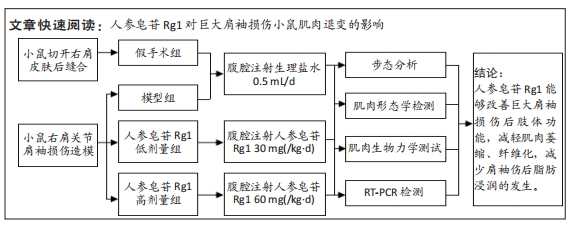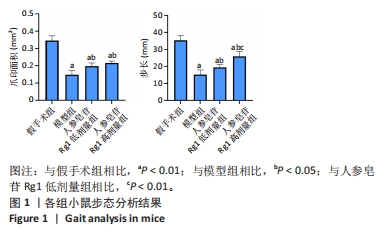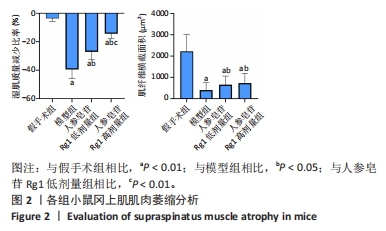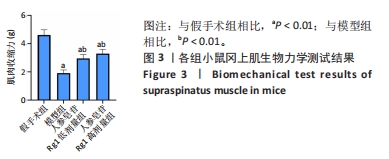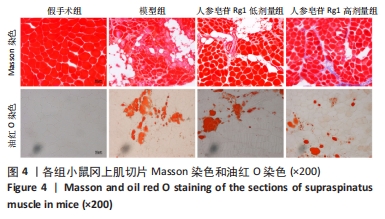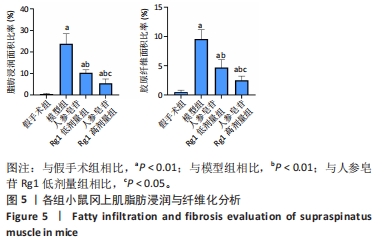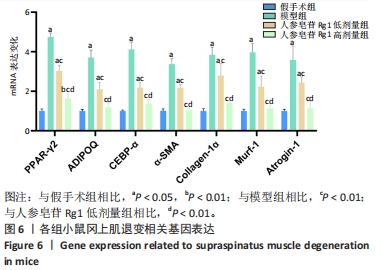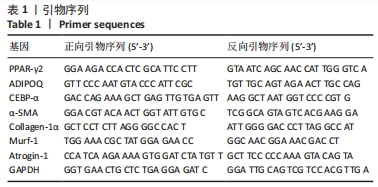[1] PIPER CC, HUGHES AJ, MA Y, et al. Operative versus nonoperative treatment for the management of full-thickness rotator cuff tears: a systematic review and meta-analysis. J Shoulder Elbow Surg. 2018;27(3):572-576.
[2] CHEUNG S, DILLON E, THAM SC, et al. The presence of fatty infiltration in the infraspinatus: its relation with the condition of the supraspinatus tendon. Arthroscopy. 2011;27(4):463-470.
[3] JEONG HY, KIM HJ, JEON YS, et al. Factors Predictive of Healing in Large Rotator Cuff Tears: Is It Possible to Predict Retear Preoperatively? Am J Sports Med. 2018;46(7):1693-1700.
[4] COLLIN P, KEMPF JF, MOLÉ D, et al. Ten-Year Multicenter Clinical and MRI Evaluation of Isolated Supraspinatus Repairs. J Bone Joint Surg Am. 2017;99(16): 1355-1364.
[5] GLADSTONE JN, BISHOP JY, LO IK, et al. Fatty infiltration and atrophy of the rotator cuff do not improve after rotator cuff repair and correlate with poor functional outcome. Am J Sports Med. 2007;35(5):719-728.
[6] ELIASBERG CD, DAR A, JENSEN AR, et al. Perivascular Stem Cells Diminish Muscle Atrophy Following Massive Rotator Cuff Tears in a Small Animal Model. J Bone Joint Surg Am. 2017;99(4):331-341.
[7] DENIZ G, KOSE O, TUGAY A, et al. Fatty degeneration and atrophy of the rotator cuff muscles after arthroscopic repair: does it improve, halt or deteriorate? Arch Orthop Trauma Surg. 2014;134(7):985-990.
[8] LIEM D, LICHTENBERG S, MAGOSCH P, et al. Magnetic resonance imaging of arthroscopic supraspinatus tendon repair. J Bone Joint Surg Am. 2007;89(8):1770-1776.
[9] WANG Z, LIU X, DAVIES MR, et al. A Mouse Model of Delayed Rotator Cuff Repair Results in Persistent Muscle Atrophy and Fatty Infiltration. Am J Sports Med. 2018;46(12):2981-2989.
[10] HAMANO N, YAMAMOTO A, SHITARA H, et al. Does successful rotator cuff repair improve muscle atrophy and fatty infiltration of the rotator cuff? A retrospective magnetic resonance imaging study performed shortly after surgery as a reference. J Shoulder Elbow Surg. 2017;26(6):967-974.
[11] LAPNER PL, JIANG L, ZHANG T, et al. Rotator cuff fatty infiltration and atrophy are associated with functional outcomes in anatomic shoulder arthroplasty. Clin Orthop Relat Res. 2015;473(2):674-682.
[12] ZHOU H, CHEN C, HU H, et al. High-intensity interval training improves fatty infiltration in the rotator cuff through the β3 adrenergic receptor in mice. Bone Joint Res. 2023;12(8):455-466.
[13] WANG Z, LIU X, JIANG K, et al. Intramuscular Brown Fat Activation Decreases Muscle Atrophy and Fatty Infiltration and Improves Gait After Delayed Rotator Cuff Repair in Mice. Am J Sports Med. 2020;48(7):1590-1600.
[14] 李赫健,李虹,金玉,等.人参皂苷Rg1、Rb1的药效及作用机制研究进展[J].武汉大学学报(理学版),2019,65(4):323-332.
[15] 郝菲,韩俊婷,李晓辉,等.人参皂苷Rg1对ApoE-/-小鼠血脂、VWF及MMP-9蛋白水平的影响[J].武警后勤学院学报(医学版),2019,28(6):21-23.
[16] WANG Z, FEELEY BT, KIM HT, et al. Reversal of Fatty Infiltration After Suprascapular Nerve Compression Release Is Dependent on UCP1 Expression in Mice. Clin Orthop Relat Res. 2018;476(8):1665-1679.
[17] BRYNIARSKI AR, MEYER GA. Brown Fat Promotes Muscle Growth During Regeneration. J Orthop Res. 2019;37(8):1817-1826.
[18] RYÖSÄ A, LAIMI K, ÄÄRIMAA V, et al. Surgery or conservative treatment for rotator cuff tear: a meta-analysis. Disabil Rehabil. 2017;39(14):1357-1363.
[19] LONGO UG, CARNEVALE A, PIERGENTILI I, et al. Retear rates after rotator cuff surgery: a systematic review and meta-analysis. BMC Musculoskelet Disord. 2021;22(1):749.
[20] UEZUMI A, FUKADA S, YAMAMOTO N, et al. Mesenchymal progenitors distinct from satellite cells contribute to ectopic fat cell formation in skeletal muscle. Nat Cell Biol. 2010;12(2):143-152.
[21] LIU X, NING AY, CHANG NC, et al. Investigating the cellular origin of rotator cuff muscle fatty infiltration and fibrosis after injury. Muscles Ligaments Tendons J. 2016;6(1):6-15.
[22] KUZEL BR, GRINDEL S, PAPANDREA R, et al. Fatty infiltration and rotator cuff atrophy. J Am Acad Orthop Surg. 2013;21(10):613-623.
[23] DANG A, DAVIES M. Rotator Cuff Disease: Treatment Options and Considerations. Sports Med Arthrosc Rev. 2018;26(3):129-133.
[24] WILSON A, MACLEAN SB. Fatty infiltration in the intact supraspinatus tendon; a normal physiological response with increasing age and female gender. Shoulder Elbow. 2022;14(5):510-514.
[25] LEE SJ, LEE EJ, KIM SH, et al. IL-17A promotes transdifferentiation of mouse myoblast cells (C2C12) into adipocytes by increasing the expression of peroxisome proliferator-activated receptor γ through CAAT/enhancer binding protein β signaling. Biotechnol Lett. 2011;33(2):229-235.
[26] LUO H, ZHOU Y, HU X, et al. Activation of PPARγ2 by PPARγ1 through a functional PPRE in transdifferentiation of myoblasts to adipocytes induced by EPA. Cell Cycle. 2015;14(12):1830-1841.
[27] AGHA O, DIAZ A, DAVIES M, et al. Rotator cuff tear degeneration and the role of fibro-adipogenic progenitors. Ann N Y Acad Sci. 2021;1490(1):13-28.
[28] DAVIES MR, GARCIA S, LIU M, et al. Muscle-Derived Beige Adipose Precursors Secrete Promyogenic Exosomes That Treat Rotator Cuff Muscle Degeneration in Mice and Are Identified in Humans by Single-Cell RNA Sequencing. Am J Sports Med. 2022;50(8):2247-2257.
[29] TIAN W, CHEN L, ZHANG L, et al. Effects of ginsenoside Rg1 on glucose metabolism and liver injury in streptozotocin-induced type 2 diabetic rats. Genet Mol Res. 2017;16(1).
[30] LIU H, WANG J, LIU M, et al. Antiobesity Effects of Ginsenoside Rg1 on 3T3-L1 Preadipocytes and High Fat Diet-Induced Obese Mice Mediated by AMPK. Nutrients. 2018;10(7):830.
[31] SHIN SS, YOON M. Korean red ginseng (Panax ginseng) inhibits obesity and improves lipid metabolism in high fat diet-fed castrated mice. J Ethnopharmacol. 2018;210:80-87.
[32] NAIMARK M, TRINH T, ROBBINS C, et al. Effect of Muscle Quality on Operative and Nonoperative Treatment of Rotator Cuff Tears. Orthop J Sports Med. 2019; 7(8):2325967119863010.
[33] GO GY, LEE SJ, JO A, et al. Ginsenoside Rg1 from Panax ginseng enhances myoblast differentiation and myotube growth. J Ginseng Res. 2017;41(4):608-614.
[34] JEONG HJ, SO HK, JO A, et al. Ginsenoside Rg1 augments oxidative metabolism and anabolic response of skeletal muscle in mice. J Ginseng Res. 2019;43(3):475-481.
[35] WU J, SAOVIENG S, CHENG IS, et al. Ginsenoside Rg1 supplementation clears senescence-associated β-galactosidase in exercising human skeletal muscle. J Ginseng Res. 2019;43(4):580-588.
[36] LEE TXY, WU J, JEAN WH, et al. Reduced stem cell aging in exercised human skeletal muscle is enhanced by ginsenoside Rg1. Aging (Albany NY). 2021;13(12): 16567-16576.
|
